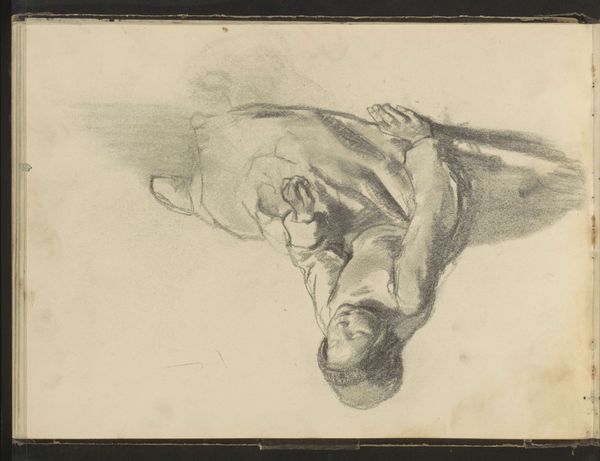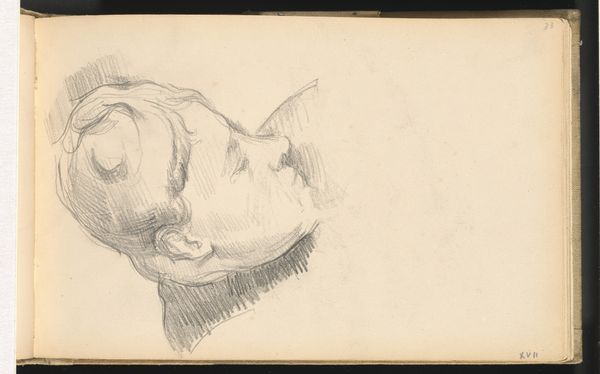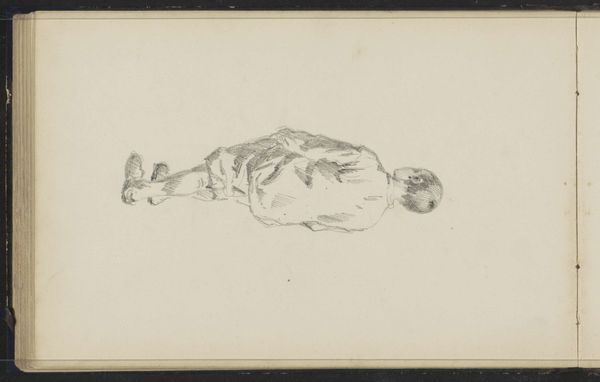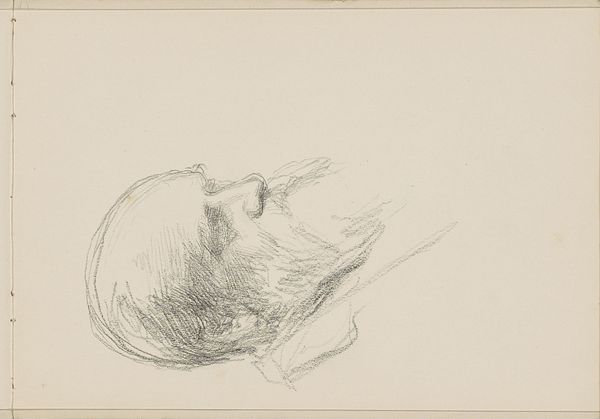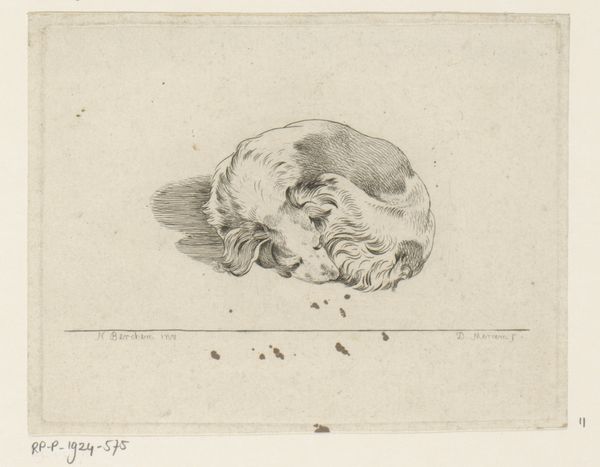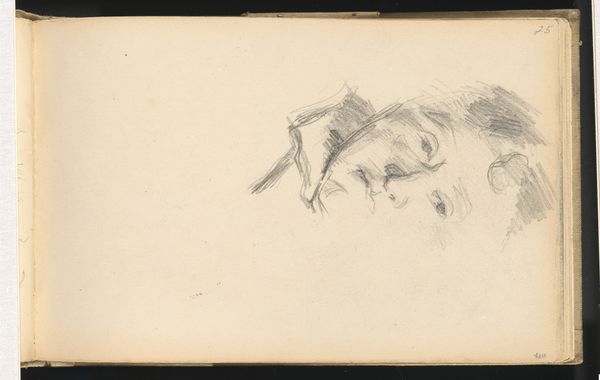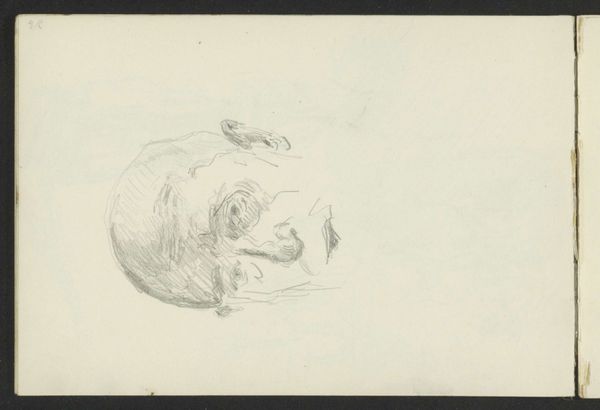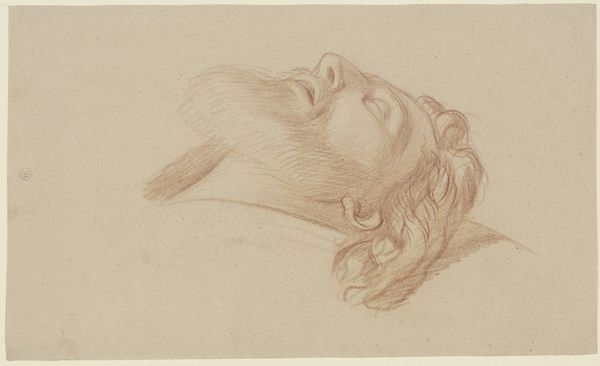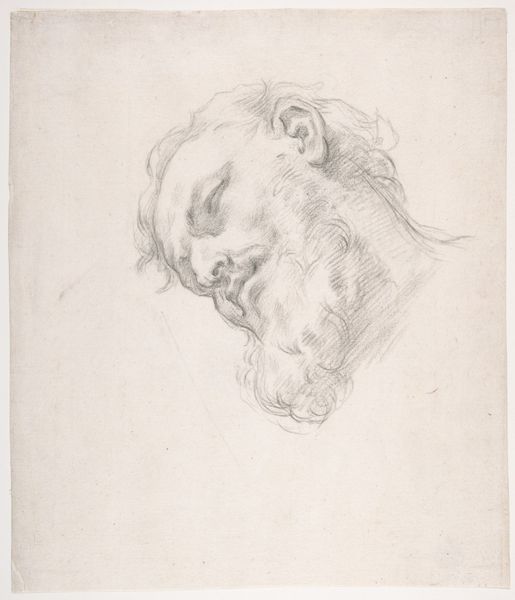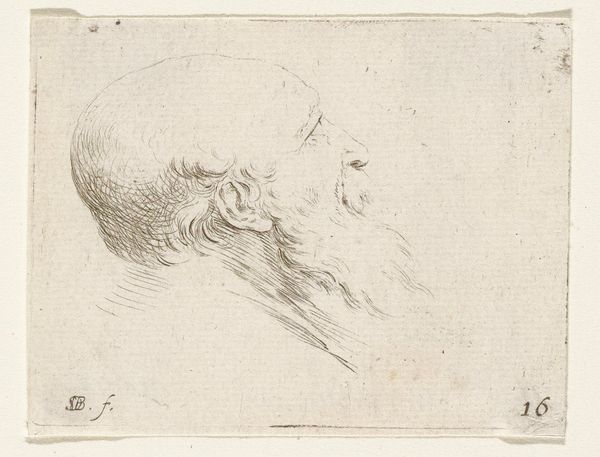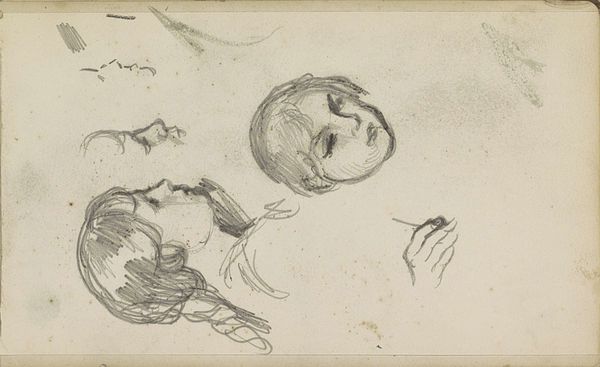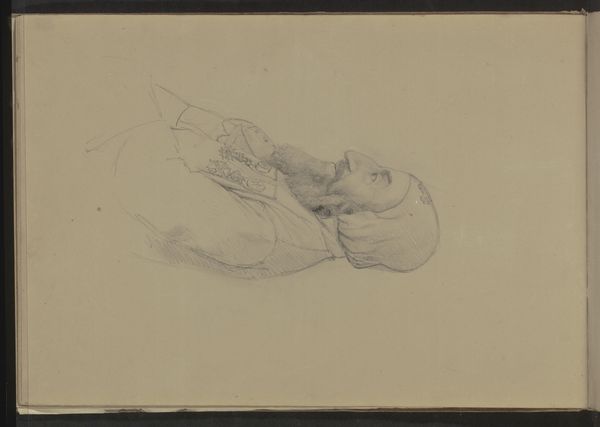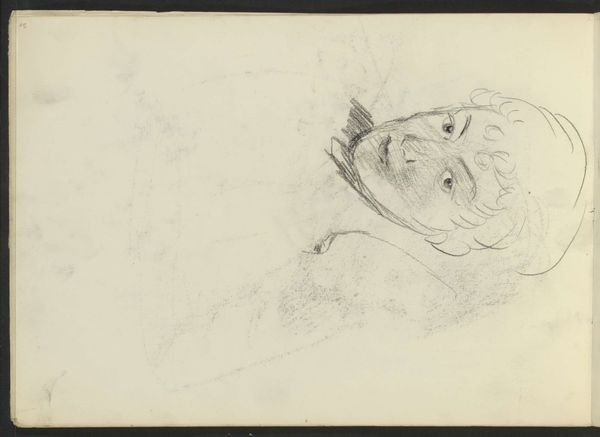
drawing, paper, pencil
#
pencil drawn
#
drawing
#
amateur sketch
#
toned paper
#
light pencil work
#
pencil sketch
#
incomplete sketchy
#
paper
#
personal sketchbook
#
detailed observational sketch
#
pencil
#
sketchbook drawing
#
pencil work
#
academic-art
#
realism
Copyright: Rijks Museum: Open Domain
Editor: Here we have a pencil drawing titled "Portret van een man met een baard" (Portrait of a Man with a Beard) made by Jan Baptist Tetar van Elven around 1843-1864. It feels like a quick sketch from a personal sketchbook, capturing a fleeting moment. What draws your attention in this seemingly simple portrait? Curator: The immediacy of the sketch is very revealing. The beard, meticulously rendered with tight, curling lines, acts as a symbol of the subject’s… perhaps not virility, but certainly presence. Think of the beard across cultures: wisdom, authority, rebellion. What feeling does this specific rendering evoke in you? Editor: I hadn’t considered the beard that deeply, but I see what you mean! The intense detail compared to the rest of the sketch does give it more weight. It almost grounds the image. The man looks weary somehow. Curator: Weariness is key. Consider what symbols resonate during times of upheaval. During the mid-19th century, the Industrial Revolution drastically changed society. A portrait, especially of a bearded man, becomes a marker of traditional values confronting modernity. Does it then change the way you see this "simple" sketch? Editor: Absolutely, understanding the context adds a whole other layer to my interpretation. The sketch now feels like more than just a likeness. It feels like a symbol of something bigger happening in that era. Curator: Precisely! And that, in essence, is the power of the visual symbol – its capacity to hold cultural memory and spark continued conversation. Editor: I never would have considered this, without this perspective. Now I understand a lot more about how images really speak through time! Thanks.
Comments
No comments
Be the first to comment and join the conversation on the ultimate creative platform.
